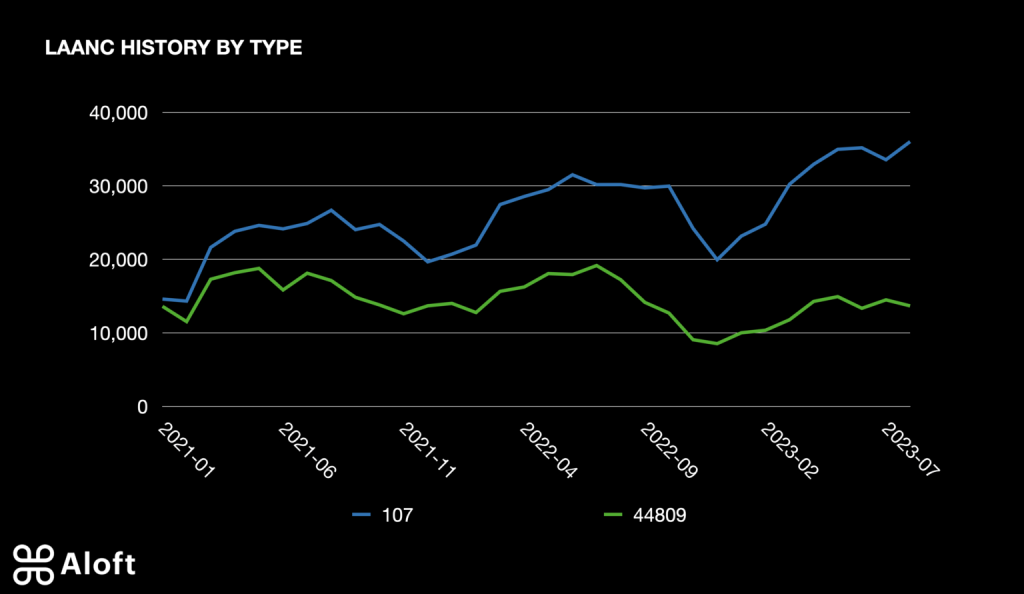
We (almost) all use it, we love it, although it can sometimes be a pain in the butt to have to remember to check it, but Aloft has just announced it has passed one million authorizations using FAA’s LAANC program on its app. The company also shared trends on the use of the program over the last year by both Part 107 and recreational pilots.
Aloft is the leading portal for LAANC auths
In total the FAA has approved 16 companies to provide LAANC services to drone pilots. Between those companies, the FAA has approved 1.6 million LAANC applications through their various apps or websites. Today, Aloft shows that they are very much the most used provider of LAANC with passing one million approvals alone.
Founded in 2015 by Jon Hegranes and Joshua Ziering, the company has become the leader in LAANC operations for recreational, Part 107, and enterprise pilots in the US. Today’s announcement shows the company has been responsible of handling roughly 62% of approvals with the FAA.
Aloft doesn’t just provide LAANC services on behalf of the FAA, the company also maintains the administration’s B4UFLY app. Alongside the one million LAANC authorizations, the company shared B4UFLY has had over 30 million airspace searches.
Both these number show that the industry has been continuously growing and becoming more active in controlled air space. However, some of the trends show the growth is more in the licensed side of the tools rather than recreationally.
According to Aloft when comparing last year’s numbers from January to August to this year’s numbers during the same range, Part 107 LAANC authorization are up over all by 19% (35% on Aloft) while recreational authorizations are down by 20% (11% on Aloft).

This isn’t a rather shocking statistic, the professional drone industry has been booming recently. Drone photos are a common use for real estate and construction projects. Drones have also become more mainstream to be used by public safety and for infrastructure inspections. Many of these operations are within major cities that usually have a large airport. Drone use in these sectors are only expected to grow in the coming years.
On the other hand, these numbers might show that recreational use of drones could be declining, or at least in controlled air space. Consumer drone updates have become more iterative with less ground shatter features. So maybe the industry is calming down on the hype of the new tech or maybe city content is less popular? Only time will tell if this is a true trend of just a short term slowdown in use.
FTC: We use income earning auto affiliate links. More.



Comments